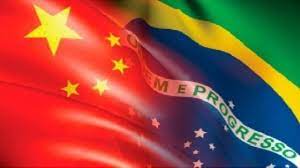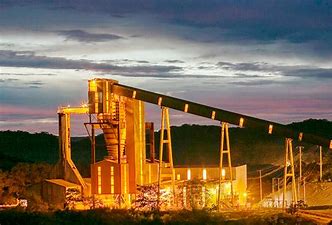The generation investment arm of the J&F group expects to reach 1.26 GW of installed capacity by 2025
07/11/2022
With the plan to transition from an infrastructure company to a service company in the power sector, Âmbar Energia, a subsidiary of the J&F conglomerate, has an ambitious goal to invest R$6.5 billion in solar generation in Brazil by 2025 and reach 1.26 gigawatts (GW) of installed capacity.
In distributed generation alone, R$1.3 billion of the projects in the pipeline will be invested to reach 260 MW. The kick-off will be on July 14 with the inauguration of the first 5 MW solar farm, in São Paulo, to serve Swift’s stores and other clients. By the end of the year, 20 solar farms are expected to be ready, totaling 100 MW in operation.
The sector is in a “race for the sun” this year to be free of the charge the distribution grid usage fee (TUSD) until 2045. The projects that request connection to the grid until the end of the year will continue to be exempt from the TUSD for 23 years, so the challenge for Âmbar is to validate the amount of projects that it has until the end of the year to be able to take advantage of the benefit.
/i.s3.glbimg.com/v1/AUTH_37554604729d4b2f9f3eb9ad8a691345/internal_photos/bs/2022/q/A/7EyAtbRoKSdnqzT6LvAA/11emp-100-ambar-b3-img01.jpg)
Marcelo Zanatta — Foto: Carol Carquejeiro/Valor
The bulk of the investments will be channeled to the free power market. To reach 1 GW, the company will have to disburse R$5.2 billion. Âmbar’s CEO Marcelo Zanatta says that the company’s trading arm was born recently and already has about 2,000 customers.
In addition, the controlling group has a large portfolio of customers and suppliers that can receive customized energy services according to size and need. “Just as Friboi offers a protein solution, we can offer a power solution,” says the executive.
Mr. Zanatta explains that the solar farms will be distributed in several states, depending on the opening of new Swift stores. In the free power market, the projects are large and the idea is to take advantage of land where there is more insolation, and the company already has spaces in Mato Grosso, in the north of Minas Gerais and in the Northeast region, with projected investments of R$5,2 billion by 2025, the executive says.
The company is quite ramified: there are two transmission companies with 460 km of lines, two gas-fired thermoelectric plants (UTE Cuiabá, 529 MW, and UTE Uruguaiana, 640 MW), 645 km of gas pipeline connecting Bolivia to Cuiabá, and energy trading. It is still too soon to know whether the company will also be able to become relevant in services, but the strategy is outlined.
According to Âmbar’s calculations, with the creation of the solar farms, 12,000 tonnes of CO2 equivalent emissions are avoided per month, proportional to the monthly planting of 4 million trees. If everything goes right on this horizon, J&F’s energy arm is expected to more than double its installed capacity, jumping to almost 2.5 GW from the current 1.2 GW of power.
Besides the challenge of deploying a huge scale of power in a short time, there is the pressure of the production chains. The company says it is taking advantage of the capillarity of the multinational and has five strategic suppliers in Asia. The equipment price increase of 10% to 15% in the last 12 months is a point of attention, but Mr. Zanatta says he believes the prices can slow down by 2025.
Another line of business is generation from natural gas. The investments underway in 2022 add up to more than R$1.2 billion and include improvements in the thermal plants and the construction of four more plants, which together give 344 MW of power. The investment is the result of the 2021 emergency auction in which the company acquired the four plants.
In the bidding, Âmbar proposed the transfer of the obligations of the thermal plants contracted to the UTE Cuiabá thermal plant, but there is an impasse in the Brazilian Electricity Regulatory Agency (Aneel) whether to accept the proposal or not.
*By Robson Rodrigues — São Paulo
Source: Valor International

/i.s3.glbimg.com/v1/AUTH_37554604729d4b2f9f3eb9ad8a691345/internal_photos/bs/2022/9/6/9DENJZRsqBIKbAh24qkA/11emp-100-tv-b6-img01.jpg)

/i.s3.glbimg.com/v1/AUTH_37554604729d4b2f9f3eb9ad8a691345/internal_photos/bs/2022/i/B/CulsCBT8eEcGFVqqSVzA/76637742-brasil-20-20bras-c3-adlia-20-20bsb-20-20pa-20-2009-05-2018-20-20pa-20-20-20lift-bc-20o-20presidente-20do-20banco-20central.jpg)

/i.s3.glbimg.com/v1/AUTH_37554604729d4b2f9f3eb9ad8a691345/internal_photos/bs/2022/Q/P/I0izuNRD6pkeYUKQFNmw/08emp-100-aena-b3-img01.jpg)
/i.s3.glbimg.com/v1/AUTH_37554604729d4b2f9f3eb9ad8a691345/internal_photos/bs/2022/3/6/58xOpxQhOx0uXTgd1Q2w/08bra-100-troca-a4-img01.jpg)
/i.s3.glbimg.com/v1/AUTH_37554604729d4b2f9f3eb9ad8a691345/internal_photos/bs/2022/A/v/OHqivBSsuHbt5tQZGxRQ/08agr-100-abre5-e1-img01.jpg)
/i.s3.glbimg.com/v1/AUTH_37554604729d4b2f9f3eb9ad8a691345/internal_photos/bs/2022/b/b/dPIJNWRQ2GPPHVYODLbQ/dolar-cambio-credito-pexels.png)

